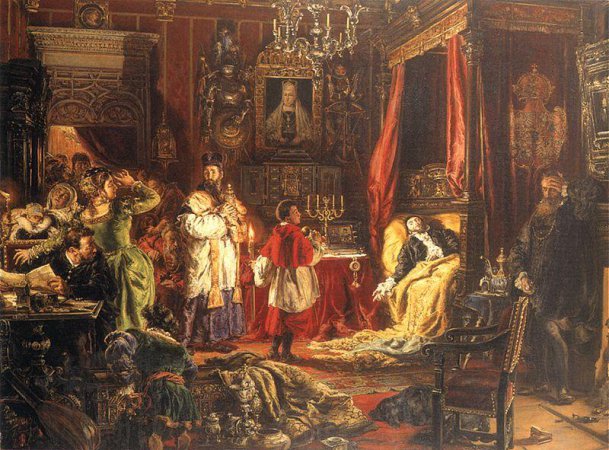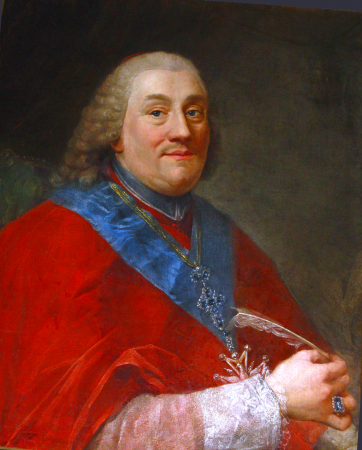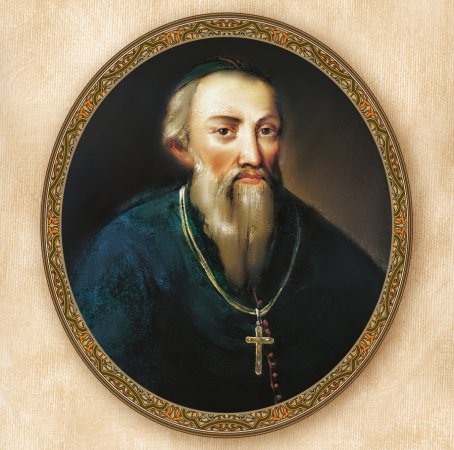Interrex
In the Polish Commonwealth, a person acting for the king during an interregnum. For the first time, an interrex was appointed after the death of King Sigismund August in 1572. In the face of perils resulting from absence of a king as a head of state, in particular those with regard to maintaining integrity of the state, a conviction firmed up of a necessity to establish a system of supreme and central state institutions which would be a permanent mechanism in force in the Polish Commonwealth during the period of absence of the head of state. This also manifested itself in the need to establish, or more precisely, to confer upon a person or an office, special powers for the duration of an interregnum, allowing to perform tasks related to the organization of the course of the interregnum, as well as functions of special importance. Such a person or body would act only during an interregnum and be appropriate for this only situation. It would become a political and systemic institution, performing the functions of an authority of the Polish Commonwealth during this period.
However, the Sejm of the Polish Commonwealth was considered to be the highest body acting during an interregnum, as it consisted of representatives of territories and of dignitaries of the Polish Commonwealth. Convened at that time as a result of a grassroot initiative, it has become the highest body that represented the Commonwealth and its majesty. The rule that was adopted and enforced during the first two interregna in the years 1572-1574 and 1574-1576, creating a premise for certain circumstances in the future, was the fiction of the Sejm representing only two classes, with absence of the king during an interregnum. Thus, the fiction of existence and functioning of a third class was assumed to be fulfilled by the interrex institution. The interrex was established at th convocation convened on 6 January 1573, during which a discussion was held on the establishment of an institutional body empowered to manage the activities necessary to effectively end the interregnum and create the basis for establishment of a real political leadership in this period. During the convocation, a difference in views concerning the interrex person emerged. On the one hand, it was argued that this function could be entrusted to the Crown Marshal, as the highest secular official. On the other hand, it was pointed out that it was possible to entrust the management activities during the interregnum period, and at the same time quasi performance of the function of the head of state, to the primate of Poland who was the archbishop of Gniezno and the highest ranking official in the catholic church. He was a clergy senator with an already established elevated status, which resulted in numerous legal and political customs, including the right to substitute for the king during his absence, as well as the generally recognised right to crown the king.
Since the resolutions of the convocation were considered important, they created a premise for the adoption of the convocation assembly as a permanent element of the procedure during the interregnum period, recognising this form of an assembly as a separate convocation Sejm. In the same way, the leadership of the primate during an interregnum was established, which was not provided for in the convention's resolution, but established by public consensus on this matter. As an interrex, the primate was thus granted the right to announce king’s death, which marked the beginning of the interregnum, to convene the Sejm after the death of the king and other assemblies, national and local, in the period of the interregnum. This was one of the key powers of the monarch, which determined the ability of the Polish Commonwealth to weather that period. Moreover, the interrex was granted the right to nominate, and then crown, a newly elected ruler. Although of declaratory significance, it was also of a constitutive nature and therefore essential for the proper election of a new king.
But it was practice which was of decisive importance for the political position of the interrex, the Archbishop of Gniezno. Organisational solutions from the period of the first interregnum became models of conduct in subsequent events, eventually becoming established as a rule of law. The recognition the Primate of Poland, who was the Archbishop of Gniezno, as the interrex, meant that the political clout of the Church, specific to the Polish Crown, was recognised as binding in the Polish Commonwealth. It was assumed that under royal authority, which was not defined by law but traditionally recognised as the prerogative of the monarchs, the interrex, who acted as a special body, would assume jointly with the senate the duties related to the current state policy and, above all, the right to convene all assemblies. In particular, those that were important for the determination of the course of the interregnum, such as pre-convention assemblies and convocation assemblies, but also the follow-up assemblies provided for in the state system, i.e. pre-election, and pre-coronation ones, as well as the election and coronation assemblies proper. In this context, the interrex had the right to speak and to mitigate disputes. Similarly, being in a sense the centre coordinating the course of the interregnum, collecting information in his surroundings, the interrex affected the functioning of the remaining institutions of the state system of the Polish Commonwealth of the time, including all forms of activity, in particular representative activities and diplomacy, i.e. external relations. He thus had an influence on many matters and made managerial and orderly decisions, but it is clear that he did not assume the full powers of the royal authority, which had not yet been regulated by law and which, by way of practice but also of the customs adopted on its basis, were partly exercised either by other bodies and institutions of the Polish Commonwealth or by the decision-making circles acting during an interregnum.
Out of all 25 primates of the Republic of Poland until 1795, only 10 became interrexes, although there were 11 periods of interregnum. The first interrex was Jakub Uchański (1573). He also acted as an interrex in the interregnum of 1574-1576. Stanisław Karnkowski acted as interrex in 1587. In 1632, primate Stanisław Wężyk and in 1648 primate Maciej Łubieński became interrexes. Also, after the abdication of King Jan Kazimierz (1668), primate Mikołaj Prażmowski became the interrex. During the interregnum after Michael's death (1674), interrex primate Casimir Florian Czartoryski died in the course of his duties. He was replaced as interrex by Andrzej Trzebicki, the bishop of Kraków. During the election of 1696, primate Michał Radziejowski was the interrex. In 1704, after the forced abdication of August II, primate M. Radziejowski was entirely omitted as interrex and under dictate by the Swedish King Charles XII was replaced by the Poznań Bishop Mikołaj Święcicki who proclaimed Stanisław Leszczyński the king. In 1733, primate Teodor Potocki, a proponent of election of August III, became interrex. During the last interregnum after which the last king, Stanisław August Poniatowski, was elected, primate Władysław Łubieński was thus the last interrex.
See: A. Sucheni-Grabowska, Sejm w latach 1540-1587, in: Historia sejmu polskiego, vol. 1, Warszawa 1984, edited by J. Michalski, p. 114-216; T. Wierzbowski, Jakób Uchański, arcybiskup gnieźnieński (1502-1581), Warszawa 1895; T. Piliński, Bezkrólewie po Zygmuncie Auguście i elekcya króla Henryka przez Tadeusza Pilińskiego, Kraków 1872; S. Gruszecki, Walka o władzę w Rzeczypospolitej Polskiej po wygaśnięciu dynastii Jagiellonów (1572-1573), Warszawa 1969; S. Płaza, Próby reform ustrojowych w czasie pierwszego bezkrólewia [1572-1574], Kraków 1969; E. Dubas-Urwanowicz, Koronne zjazdy szlacheckie w dwóch pierwszych bezkrólewiach po śmierci Zygmunta Augusta, Białystok 1998; J. Dzięgielewski, Sejmy elekcyjne. Elektorzy. Elekcje 1573-1674, Pułtusk 2003; D. Makiłła, Artykuły henrykowskie (1573-1576). Geneza-Obowiązywanie-Stosowanie. Studium historyczno-prawne, Warszawa 2012; A. Sucheni-Grabowska, Prymasi XVI stulecia w polskim systemie parlamentarnym, in: Prymasi i prymasostwo w dziejach państwa i narodu polskiego, edited by W. J. Wysocki, Warszawa 2002, p. 16-38; S. Grodziski, Stanowisko interrexa w polskiej tradycji dziejowej, in: Leges sapere. Studia i prace dedykowane profesorowi Januszowi Sondlowi w pięćdziesiątą rocznicę pracy naukowej, edited by W. Uruszczak, P. Święcicka, A. Kremer, Kraków 2008; J. Dzięgielewski, Prymasi w roli interreksów, in: Prymasi i prymasostwo w dziejach państwa i narodu polskiego, edited by W. J. Wysocki, Warszawa 2002, p. 39-50; M. Niemyjski, Kontrowersje wokół prymasa Jakuba Uchańskiego jako interrexa, in: Nad społeczeństwem staropolskim, vol. 1. Kultura-Instytucje-Gospodarka w XVI-XVIII stuleciu, edited by K. Łopatecki and Wojciech Waczak, Białystok 2007, p. 35-50.




